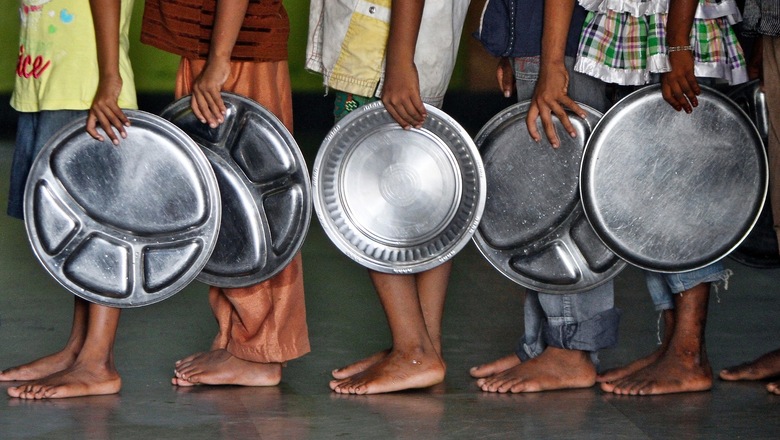
views
Despite becoming the world’s fifth largest economy, India, since the last few years, has been seeing a decline in its Global Hunger Index ranking. India currently stands at the 107th position out of the total 123 countries, lower to its neighbouring countries such as Pakistan, Sri Lanka, Bangladesh and Nepal. With the current scenario, India will not be able to achieve the target of zero hunger by 2030.
The Ministry of Women and Child Development (MoWCD) has objected to the rankings by the Global Hunger Index and questioned the methodologies followed. Even though there can be better ways of measuring hunger and malnutrition, the government’s own data indicates poor performance on both fronts. NFHS-5 (2019-21) indicates a rising level of anaemia in the population and says that a third of children are stunted and more than a fifth are wasted.
Given the poor implementation of programmes and schemes in the country, this low rank shouldn’t come as a surprise. It clearly is a reflection of low budgets allocated to them. The hunger crisis in India is an end consequence of many other crises such as poverty, social injustice, Covid-19, gender inequality, conflict, climate change, cultural norms and economic shocks. The rising levels of food insecurity will mean poor health standards of the current and the future generations to come. This can also mean mass migration, starvation and increase in conflicts at an unprecedented rate.
The government continuously has pointed towards the problems in the report. Even if the research methodology is flawed, various sources including the Union government’s own data shows that we are one of the worst performers in South Asia. The government’s continuous neglect towards the situation had first resulted in stagnancy and now decline in India’s position.
To reduce and eliminate hunger and the consequential disease burden, India has to take a two-pronged approach. One is the pre-existing public nutrition approach and the other is clinical/personalised nutrition. The former is where we tackle malnutrition at a population level. This includes measures such as recently added, fortification of rice with iron, folic acid and vitamin B12. This approach works but has its limitations. As the food consumption varies across populations and geography so does nutrition and food requirements. Clinical or personalised nutrition aims to ameliorate this problem. In this we integrate existing healthcare infrastructure such as PHCs and district hospitals. This uses a targeted approach to cure and prevent hunger and malnutrition.
Hunger is not just the result of lack of food. It can also indicate problems in distribution and storage of food. There is an urgent need to create integrated systems that will make sure food reaches all. India should work towards interventions that provide adequate food with required nutrients to everyone. The country wastes a significant amount of the total food produced each year due to storage issues. More warehouses and cold storage facilities will help solve the problem to an extent.
The top-down approach in the system adds to the problem. Giving a toolbox of policy interventions with requisite autonomy to the local government is a way to go forward. Adequate training of our existing healthcare workforce in nutrition is pertinent and will lead to better health outcomes. Unification of all malnutrition schemes into a single Ministry of Nutrition will help in consolidation of efforts and resources. The ministry should be made responsible for all nutrition-related interventions ranging from Angangadi services scheme, mid-day meals to ration distribution. The establishment of a nutrition cadre at the village level to reduce the burden of nutrition interventions on overworked anganwadi workers is an essential step.
Hunger index might be limited and might have problematic methodological approaches. However, this report and others give enough evidence that India has a larger problem at hand to solve. We are right in the middle of a looming catastrophe. India cannot have “one size fits all” formula. We need better implementation of policies which address the root causes of the problem.
Harshit Kukreja is Research Analyst, The Takshashila Institution. Mahek Nankani is Assistant Programme Manager, The Takshashila Institution. The views expressed in this article are those of the authors and do not represent the stand of this publication.
Read all the Latest Opinions here




















Comments
0 comment